If you remember from Eh's! last trip to a Canadian territory, Vancyon and I thought we would be able to leave via teleporting. Turns out we were wrong, and because of a snowstorm, we were stuck on Baffin Island for the past two weeks! Luckily, a plane finally came through to give my avatar a ride home, but Vancyon, being so far north already, had the urge to go visit the north pole!
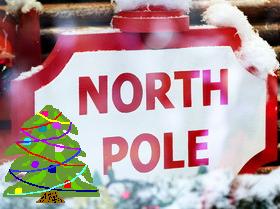
I'm going solo in this edition, but maybe we'll find someone who can help out with the next destination! Let's see if you can guess where I'm headed to now. I'll give you a hint:

Nestled in Canada's most northwest corner, in between the North West Territories and Alaska, you'll find the Yukon Territory, where I am today! I'm going to be starting out at the territory's capital city, Whitehorse.
Whitehorse is the hub of the territories. Over 74 percent of Yukon's population lives in and around the city.
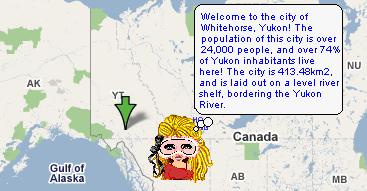
The name Whitehorse might seem a bit strange, but it has an interesting history. During 1898 there was a huge gold rush up north called the Klondike Gold Rush. The city was used as a trans-shipment point, because it could be reached by boat. Miners originally called the city White Horse, because some river rapids at a place called Miles Canyon reminded them of charging horses. The name was changed to Whitehorse in 1957, after it was made the capital city of Yukon in 1953. Also in 1957, the official flower of the Yukon was chosen, the Fireweed.

Nobody thought the Yukon was very interesting until about 1850, when Robert Campbell of the Hudson Bay Company reported that the territory might be rich in gold! In the next 25 years, prospectors came to the Yukon in search of gold, though the first course wasn't actually discovered until 1886. The Klondike Goldrush you've probably heard about it school still hadn't commenced yet though! The population of Forty Mile, the town near where the first gold was discovered, only had a population of about 600. 10 years later though, on August 17, 1896, Skookum Jim, George Carmuck and Dawson Charlie struck in rich in Bonanza Creek, a branch of the Klondike River. It didn't take long for the rest of Canada, and even the United States, to hear the news. Everyone rushed up to the Yukon to get their hands on some gold. From 1898-1899, the population of Dawson City (the original capital city of the Yukon) was over 20,000!
However, the gold rush only lasted about 7 years, until all of the near-surface gold was obtained. In these 7 years, over 95 million dollars worth of gold was mined! In the years that followed the gold rush, mining companies with big machines took over, and the population of the entire Yukon fell to around 5000. The mining of the Yukon can be looked at as both good and bad. On the good side, silver, lead, coal, and of course, gold, made the Yukon a very profitable mining community. On the down side, even today you can see the damage open-pit mining had on the Yukon. Mining and minerals are still a very big part of the Yukon's economy today.
In 1942, big change awaited the Yukon. The Alaskan highway was being built, and that meant a lot of change for this territory. Thousands of workers from the United States came in to build the highway. Many people saw the Alaskan highway as excellent for the economy. Tourists began to visit, and the population of the territory was increasing. The First Nations people of the Yukon however, knew that it would highly impact their culture and way of life. With newcomers to the territory came diseases like measles, that became epidemics in the small communities. Alcohol brought by workers didn't have a positive affect on the people either. Cars made people more self-sufficient, so old skills were lost. There were many positive effects for the First Nations people of the Yukon though. For the first time, they were able to become involved with politics, and have a say in the territory's government. Hospitals and other medical supplies were much more available then before, and, because the price of furs were decreasing (fur trade was very important for the economy at the time), First Nations people were able to take jobs as guides, helping the highway surveyors.
Today, the Yukon is very similar to the provinces, in terms of politics. A territorial cabinet is elected, just like on a provincial or federal level of government, which has the power to pass laws in different areas (education, health care etc.). Unlike Canada's other two provinces, Nunavut and the North West Territories, the Yukon controls their own natural resources. The Yukon First Nations work with the territorial government, and amongst themselves in their own self-governments. First Nations self-governments have power to make laws in their own communities.
Now, I don't know about you, but when I think of anywhere up north, I generally think cold! Well, the Yukon is cold - during the winter. In the summer months, the Yukon is perfectly warm. The average temperature to expect in January is around -23C (-9.4F), but in July, the temperature can be anywhere from 14C to 25C!
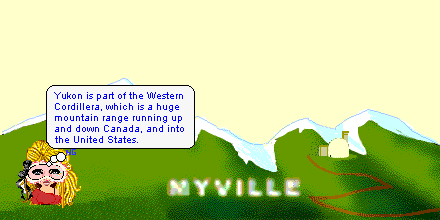
Over 57 percent of the Yukon is covered in trees! There are more than 200 different species of wildflowers. The magenta fireweed is the most common.
Like the fireweed, the most common bird of the Yukon is also the official bird of the territory. Ravens are everywhere in the Yukon, so in 1985, the raven became the Yukon's official bird.
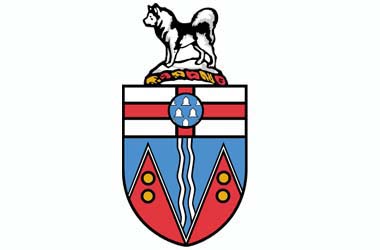
This is a picture of the Yukon coat of arms. Can you guess what any of the symbols mean? The cross at the top is called a St. George cross, and it represents English explorers in the Yukon. The blue circle symbolizes the fur trading that took place in the Yukon. The red triangles represent the mountains of the Yukon, and the yellow circles represent how the Yukon has many minerals. The white squiggly lines symbolize the Yukon River, and at the top of the coat of arms is a husky, standing on a pile of snow.
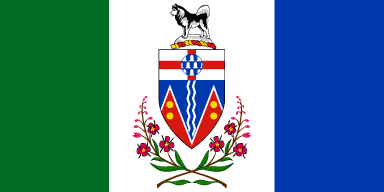
The flag of the Yukon was chosen in 1968. The territory held a design contest, and this was the design that won! Can you guess what the plant at the bottom of the flag is?
The Yukon has a pretty spectacular array or wildlife. The whole territory is full of endangered animals and birds, such as the bald eagle. Grizzly bears, black bears, and even the occasional polar bear can all be found in the Yukon.
A herd of 180,000 Porcupine caribou live in northern Yukon, and is one of the last herds of its kind. This herd walks over 750km every year!
You can find many different species of birds of prey in the Yukon. Both bald and golden eagles are common to see, as well as gyrfalcons and peregrine falcons.
The Yukon isn't quite what it may seem to be at a first glance. Looking closer, we see how modern and interesting this territory really is! Hopefully you've learned something new about the north.
--rochrox